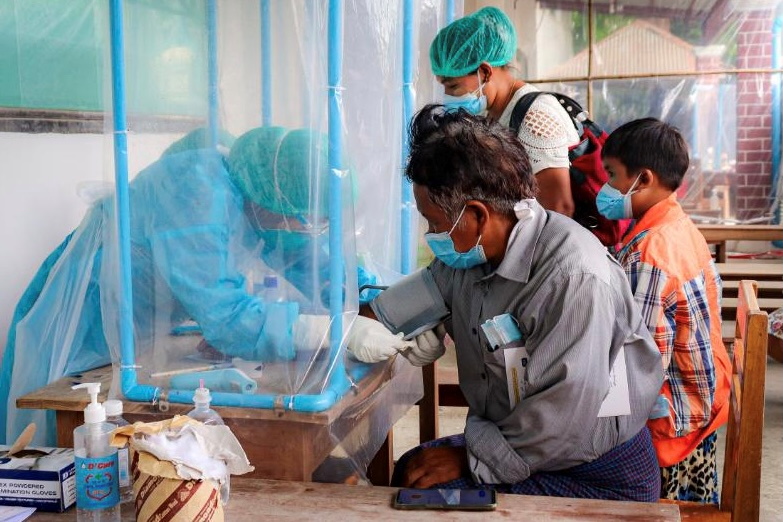Data Matters No. 7
(This article is a translation of the original Burmese language version that ISP-Myanmar posted on its Facebook page on February 23, 2022.)

Within 5 days, between February 18, 2022 and February 22, 2022, daily average COVID-19 transmission has increased to 3,000 cases. According to official figures from MoH, COVID-19 transmission has peaked again in five months and the possibility of another wave is now increasingly likely. The Yangon Region is currently the most seriously affected area, with over 12,400 people infected as of February 22, 2022. Nationwide, 38 percent of all COVID-19 cases reported in February 2022 were from the heavily-populated Yangon Region.
According to the World Health Organisation (WHO), the Omicron variant is significantly more infectious than other strains and could lead to severe illness, and even death, through asymptomatic infections. The elderly, those with chronic diseases and underlying health conditions, and the unvaccinated need to be especially cautious.
∎ Why does it matter?
In Myanmar, only 36 percent of the population have been double vaccinated, and the public health system is not fully operational. Unfortunately, the Omicron variant can be transmitted by people who have received two vaccines, as well as those who have received a third dose (or booster vaccine). If current infection rates continue, the outbreak will escalate. Therefore, it is important to monitor the developments of Omicron transmission and infection rates for Myanmar to prevent the further spread of the virus among the public, and for everyone to follow all recommended safety precautions.
∎ Other relevant information
Statistics regarding the COVID-19 pandemic, announcements and regional transmission data can be found on the WHO website and on the Ministry of Health website. Information on the pandemic and vaccinations is available on the Johns Hopkins University’s Coronavirus Resource Center website and the Our World in Data website, as well as through the COVID-19 Tracker, provided by Reuters news agency.

